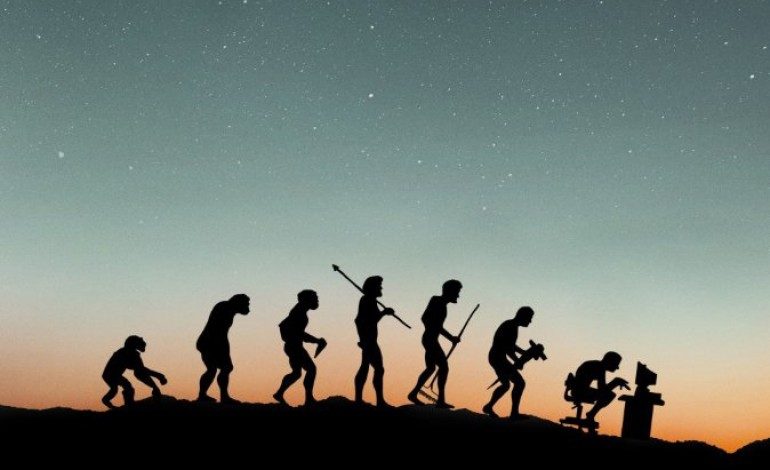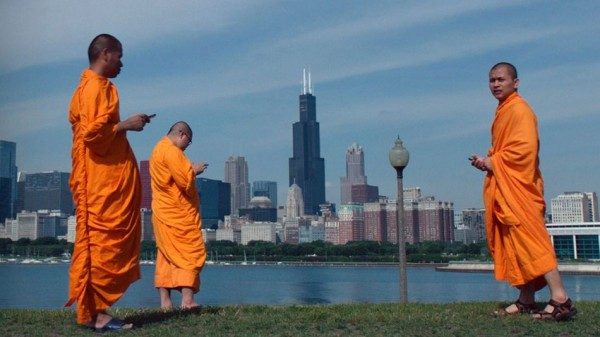

Werner Herzog’s Lo and Behold, Reveries of the Connected World serves all at once as a documentary about the far reaching wonders of the internet age as well as detailed research for a terrifyingly realistic sci-fi movie. One of the most fascinating films you will see this year (and even more so if seen in conjunction with Snowden), Herzog delivers a roller coaster of both emotion and data that will have audiences loving the internet, hating it, and then questioning humanity and existence all within the span of two hours. With a balanced narrative structure comprised of both the miracles and horrors brought to our world by the internet alone, Herzog presents audiences with a perfectly informative and timely study on interconnectedness.
Herzog’s documentary begins at The Beginning, or the first message sent over the internet (a very hardware heavy, crude version of what we know today) between the University of California, Los Angeles and Stanford University. From that humble yet momentous beginning, the film launches into a past, present, and future exploration of the internet age that followed and continues today. Narrated by Herzog with his distinctly thick German accent, the filmmaker sits down with countless experts in the field, from mathematicians and people who were part of the first ever network, to a world famous hacker, a company that is creating new molecules with the world through their own computer game, as well as Elon Musk himself (founder of SpaceX and architect of Tesla). The spread of experts and interviews is vast and delves into parts of the internet that we lay people would likely never think about.
Some of the science admittedly goes over my head; however, Herzog’s important takeaway supersedes the science, that being just how far technological progress has taken humanity and the potential for how far it can go. Neither Herzog, nor the experts interviewed, have a complete answer for the audience, but the network of theories and network of billions of people striving toward that answer is satisfying in itself. The genius of Herzog’s project is that it aims to discover rather than tell; attempts to understand rather than explain. With a film focused on expanding technology based in math and sciences, it would have been easy for Herzog to make his audience feel intellectually inferior, but he avoids that completely, and rather centers on a tone of shared fascination and allows the audience to draw their own potential conclusions throughout.
Herzog’s study is also not one-sided; in the midst of presenting various evidence and celebrations in technological advancement, Herzog doesn’t leave out its horrors. In one example, the filmmaker sits down with a family in mourning who were further torn apart by the internet when they began to receive anonymous grotesque communications regarding their deceased family member. In another, Herzog takes us to a small community of people detrimentally affected by radio waves and electromagnetism that together have found the small town in West Virginia without cell towers or WiFi that has provided them with refuge. In these cases and others, we see the downside to interconnectedness. Humans have the power to manipulate the internet, and the internet has the power to manipulate humanity.
With this discovery, Herzog introduces that (sometimes terrifying) sci-fi element – i.e. the development of artificial intelligence leading to Terminator Judgement Day-level fears. However, Herzog does well in quelling fears as soon as they’re suggested. Just as the human element factors into the terrors of the technology, so also does it contribute to its good. Herzog’s experts, while not denying the possibility or existence of A.I. and its vast potential, believe humanity to be a constant no matter what form it may take. When one expert conjectures that soon we will have computers making their own films, he counters with the claim that they will likely not be as good
as Herzog’s. In short, technology would be nowhere without human invention and vise versa. In several of his interviews, Herzog poses the question: “Does the internet dream of itself?” Regardless of the answers, Herzog exposes an interesting idea in that dreaming and inventiveness (or the qualities that separate humans from machines) are both perhaps the key to our survival and the key to further advancement.
Verdict: 5 out of 5
The wonder of Lo and Behold is not only in the facts, data, or questions put forth by the ever growing internet and technological age, but their inherent interconnectedness. Just as humans have become interconnected through the internet, so has technology itself as well as the parallel growth of humanity and technology together. Herzog beautifully makes these connections, while also making his findings accessible and relatable to the average audience member. The film is an open conversation with its audience, a seminar through film, and an expertly crafted exploration into the unknown.


